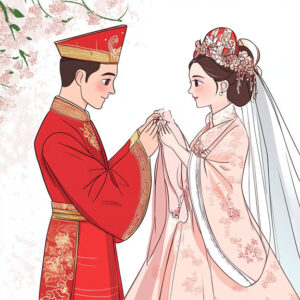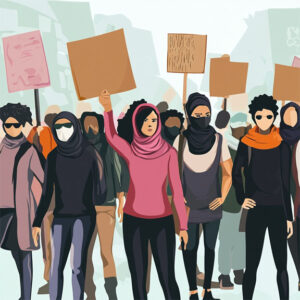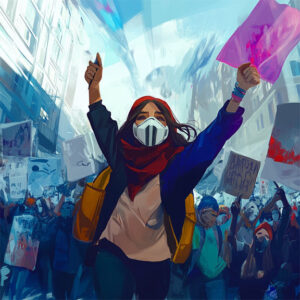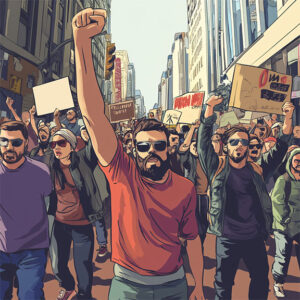 A few years ago the owners of D&D, Wizards of the Coast, issued an article on diversity. In the previous essay, I advanced two arguments in defense of some of what Wizards proposed. One is the utilitarian argument stolen from Plato that harmful aspects of art can harm a person’s character and could increase their chances of behaving badly in the real world. The second is a Kantian style argument that it does not matter whether immoral content causes harm, what matters is that the content is immoral. I ended the essay noting an obvious concern with my argument: the same reasoning would seem to apply to two core aspects of D&D: killing and looting.
A few years ago the owners of D&D, Wizards of the Coast, issued an article on diversity. In the previous essay, I advanced two arguments in defense of some of what Wizards proposed. One is the utilitarian argument stolen from Plato that harmful aspects of art can harm a person’s character and could increase their chances of behaving badly in the real world. The second is a Kantian style argument that it does not matter whether immoral content causes harm, what matters is that the content is immoral. I ended the essay noting an obvious concern with my argument: the same reasoning would seem to apply to two core aspects of D&D: killing and looting.
As an aside, I lived through the Satanic Panic D&D faced in the 1980s. The argument against D&D was like Plato’s argument but with a Christian modification that D&D would lead people to Satanism and other cults. Like most other moral panics from the right, this was debunked long ago. Now back to killing and theft.
Using Plato’s argument as a template, it is easy to argue that violence and looting should be removed from D&D: engaging in fictional violence and theft could corrupt people and make them more likely to behave badly in real life. I can also reuse the Kantian argument: even if hacking up dragons and looting their hoards had no impact on people, allowing the immoral content of killing and stealing would be immoral. This would allow for an argument from analogy: if D&D should be cleansed of racist elements for moral reasons, then it should also be cleansed of violence and theft on moral grounds. There are two main options in terms of where this reasoning should take us.
The first is to accept the analogy and agree D&D should also be cleansed of violence and theft. This would radically change the game, although some people have run violence-free campaigns. The second is to take this analogy as a reductio ad absurdum of the original argument. If using the same logic (what is known as parity of reasoning) leads to an absurd conclusion, then this can be taken as refuting arguments with the same logic. A well-known example of this is philosophy is Gaunilo’s reply to St. Anselm’s ontological argument.
Since D&D is inherently a game of combat and looting, it would be absurd to remove these elements. This would be analogous to removing cars from NASCAR. Since the violence argument is reduced to absurdity, the diversity argument is absurd as well. D&D should remain unchanged: killing, looting and no diversity changes. While this line of reasoning is appealing, it can be challenged.
For this reasoning to be good, fictional violence and theft must be analogous to fictional racism within the game. Interestingly, someone agreeing with this reasoning would need to agree that racism, killing and looting are all bad but they should not be removed from the game. Someone who thinks that racism, killing, and looting are all morally fine would not need to make the absurdity argument. They could just argue there is no moral reason to remove any of these from the game. So, can a person believe that killing, stealing and racism are bad while consistently supporting diversity on moral grounds while also allowing in game killing and looting? The answer is “yes” and supporting this requires arguing that the analogy between killing and racism breaks down.
The obvious way to do this is to point out a relevant difference between racism and killing: while racism seems to always be wrong, there are arguments that support morally acceptable violence. These include such things as Locke’s moral argument for self-defense and centuries of work in just war theory. In contrast, there seem to be no good forms of racism or cases in which racism is morally defensible. While someone might use violence for self-defense against a wrongful attack and be morally justified, there seem to be no cases of racism in self-defense: that one must use morally acceptable racism to protect oneself against wrongful racism. Likewise, there is no body of ethics that constitutes just racism theory. To be fair to the racists, they could argue in favor of the ethics of racism and I certainly invite good faith efforts to publicly make such a case.
Because there are moral distinctions in violence, D&D could include ethical violence with no moral problem. It would not be corrupting, nor would it be inherently evil. In D&D people typically play heroes doing heroic deeds such as fighting evil foes and looting their foes to continue their heroic efforts. There are, however, three obvious counters to this argument.
One is that there are arguments that violence is always wrong, and one could be a moral absolutist about violence. If violence is always wrong, then it would be wrong to include it in D&D. While not without its problems, pacifism is a coherent moral view and would certainly make D&D morally problematic if it were correct.
The second is that people play non-good and even evil characters in D&D who engage in evil acts of violence. I have played evil characters myself, my favorite being my delusional anti-paladin D’ko. One could argue that playing evil PCs would be immoral. The obvious reply is that if one is playing the role and it is not impacting the person, then there would be no moral problem: no one is being harmed, and the evil deeds are fictional. If someone were to get into the role too much and engage in behavior that did hurt other people then that would be wrong as real harm would be done. This could even be harm done at the table. For example, a player who has their character rape defeated foes and graphically describes this to the other players could be doing real harm. Also, a Kantian might disagree about the distinction between fictional and real evil and argue that to will evil even in play would still be evil.
The third is that even in games where all the PCs are good (or at least not evil), the DM must take on the role of any evil NPCs the players interact with and engage in fictional acts of evil. As such, it would seem hard to avoid including unjust violence in D&D. From a utilitarian perspective, this would be morally acceptable if the fictional violence did no harm, either in terms of corrupting people or inflicting suffering on those involved. Again, a Kantian approach might forbid even harmlessly playing an evil being as a DM but some Kantians are notorious as killjoys.
As my closing argument, I contend there is a meaningful distinction between playing an evil character doing evil acts of fictional violence and having the game content mirror the racism of the real world. To use an obvious analogy, this is the distinction between an actor playing the role of a racist in a movie and knowingly acting in a movie that serves as racist propaganda. As such, D&D can retain violence, and players can play evil characters (within limits) while avoiding moral harms. But the racism should certainly go.

 A few years ago, Wizards of the Coast(WotC), who own Dungeons & Dragons,
A few years ago, Wizards of the Coast(WotC), who own Dungeons & Dragons,  The appeal to tradition assumes a key part of what makes a belief or practice true or correct is its age; that is, it is old enough to be a tradition. If defenders of tradition accepted as correct the oldest beliefs and practices they could find, there would be no need to sort out which traditions to accept beyond determining which are the oldest.
The appeal to tradition assumes a key part of what makes a belief or practice true or correct is its age; that is, it is old enough to be a tradition. If defenders of tradition accepted as correct the oldest beliefs and practices they could find, there would be no need to sort out which traditions to accept beyond determining which are the oldest. The previous essay discussed the family of fallacies that include the appeal to tradition. In this essay I will discuss the test of time and the origin problem. As noted in the previous essay, the gist of the appeal to tradition is that it involves fallaciously inferring that something is correct or true simply because it is a tradition. While concluding that something is correct or true merely because it has been done or believed a long time is an obvious error, those making an appeal to tradition often try to invoke the notion of the test of time. In some cases, the appeal to the test of time is implied while in others it is explicitly made. The appeal to the test of time can be presented as the following argument:
The previous essay discussed the family of fallacies that include the appeal to tradition. In this essay I will discuss the test of time and the origin problem. As noted in the previous essay, the gist of the appeal to tradition is that it involves fallaciously inferring that something is correct or true simply because it is a tradition. While concluding that something is correct or true merely because it has been done or believed a long time is an obvious error, those making an appeal to tradition often try to invoke the notion of the test of time. In some cases, the appeal to the test of time is implied while in others it is explicitly made. The appeal to the test of time can be presented as the following argument: The appeal to tradition is a popular and traditional fallacy. During the last debate over same-sex marriage, this fallacy was one of the core “arguments” used by those defending “traditional” marriage. It is still commonly used to defend “traditional” gender roles and “traditional” religious values. The most obvious problem with this approach to argumentation is that it involves a fallacy, a bad argument in which the premise(s) fail to logically support the conclusion. As to why people would use a fallacy, some reasons include not realizing it is a fallacy, not having any good arguments to use, or knowing that a fallacy can be far more persuasive than a logically good argument.
The appeal to tradition is a popular and traditional fallacy. During the last debate over same-sex marriage, this fallacy was one of the core “arguments” used by those defending “traditional” marriage. It is still commonly used to defend “traditional” gender roles and “traditional” religious values. The most obvious problem with this approach to argumentation is that it involves a fallacy, a bad argument in which the premise(s) fail to logically support the conclusion. As to why people would use a fallacy, some reasons include not realizing it is a fallacy, not having any good arguments to use, or knowing that a fallacy can be far more persuasive than a logically good argument. During the COVID-19 Pandemic, Leon County in my adopted state of Florida mandated the wearing of
During the COVID-19 Pandemic, Leon County in my adopted state of Florida mandated the wearing of  In the previous essay I discussed guilt by association. Not surprisingly, there is an equal but opposite temptation: to refuse to acknowledge bad elements in groups one likes. Giving in to this temptation can result in committing a version of the purity fallacy which could be called the Denial of Association.
In the previous essay I discussed guilt by association. Not surprisingly, there is an equal but opposite temptation: to refuse to acknowledge bad elements in groups one likes. Giving in to this temptation can result in committing a version of the purity fallacy which could be called the Denial of Association. It is tempting to define a group you do not like by the worst people associated with it, but this can lead to committing the fallacy of guilt by association. To illustrate, conservative protests sometimes include people openly displaying racist symbols and this can lead leftists to conclude that all the protestors are racists. As another example, protests against Israel’s actions sometimes include people who make antisemitic statements, and this leads some people to categorize the protests as antisemitic. While this is often done in bad faith, people can sincerely make unwarranted inferences about protests from the worst people present.
It is tempting to define a group you do not like by the worst people associated with it, but this can lead to committing the fallacy of guilt by association. To illustrate, conservative protests sometimes include people openly displaying racist symbols and this can lead leftists to conclude that all the protestors are racists. As another example, protests against Israel’s actions sometimes include people who make antisemitic statements, and this leads some people to categorize the protests as antisemitic. While this is often done in bad faith, people can sincerely make unwarranted inferences about protests from the worst people present. While
While  One stock argument against social distancing and other restricted responses to the COVID-19 pandemic was to conclude these measures should not have been taken because we do not take similar approaches to comparable causes of death. In the next pandemic, we can expect the same reasoning which can be formalized as follows:
One stock argument against social distancing and other restricted responses to the COVID-19 pandemic was to conclude these measures should not have been taken because we do not take similar approaches to comparable causes of death. In the next pandemic, we can expect the same reasoning which can be formalized as follows: